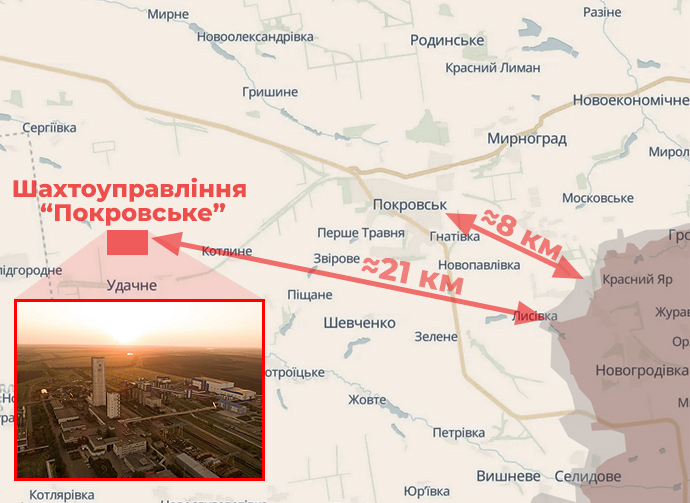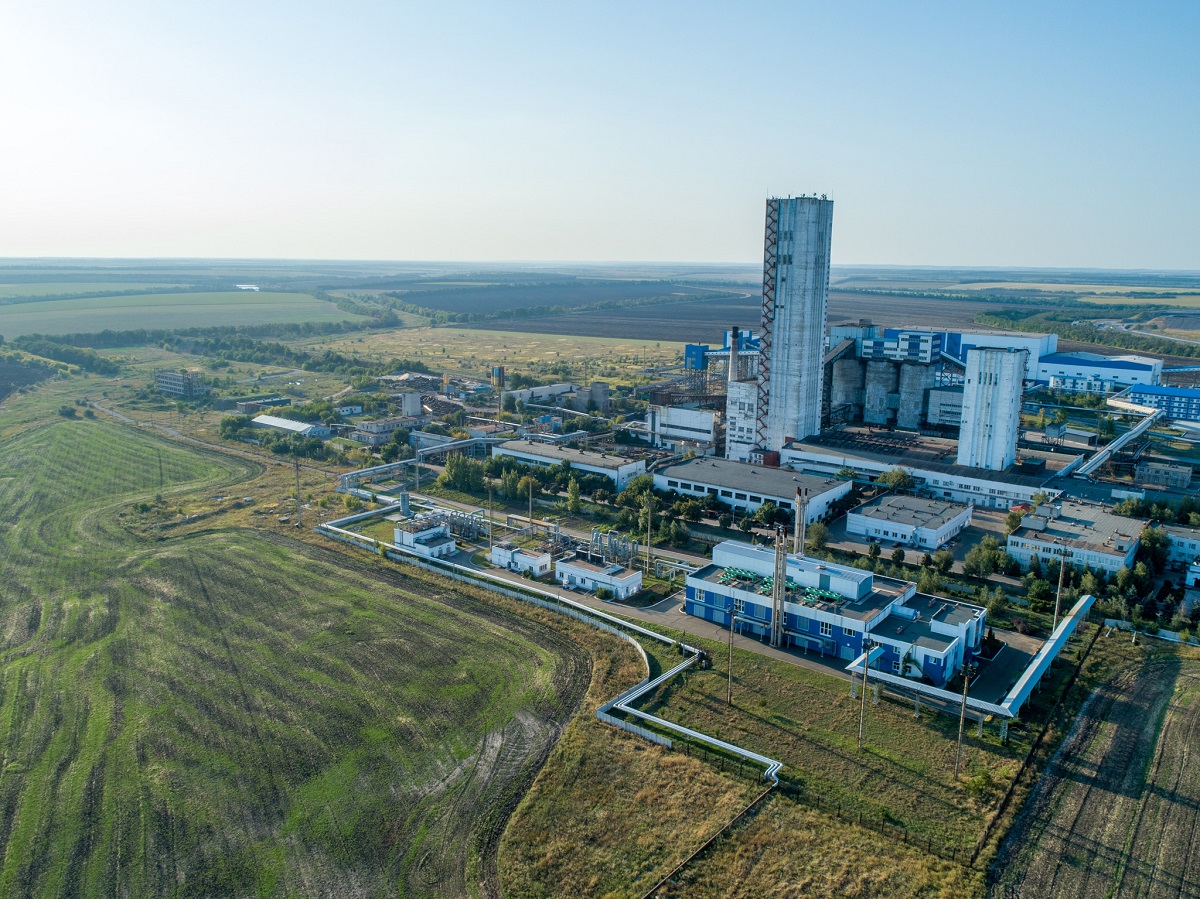The heart of Ukrainian metallurgy: What economic impact will the loss of Pokrovsk have?
The strategic objective of Russia is to reach the administrative borders of Donetsk region, with the enemy being ready to sacrifice 50-60 thousand troops just for Pokrovsk,President Volodymyr Zelensky stated.
In addition to its significance as a logistical hub for the military, the city also plays a strategic role for one of the key sectors of the Ukrainian economy – the metallurgical industry.
It houses the "Pokrovsk" mine management, which is the main center for the extraction of coking coal, the loss of which could drastically collapse steel production in Ukraine.
What could be the consequences of the occupation of Pokrovsk, would it lead to a disaster for the economy, and do metallurgists have a plan "B"? This was discussed in an interview with the president of the Association of Enterprises "Ukrmetallurgprom," Oleksandr Kalenkov.
— What is the significance of the city of Pokrovsk for Ukrainian metallurgy and the economy in general?
— A little to the west of the city is the "Pokrovsk" mine management (part of the "Metinvest" group owned by Rinat Akhmetov), where critically important coking coal for our metallurgy is extracted. Moreover, it is very high-quality coal – grade "K."
— In Ukraine, energy coal is extracted, which is burned in the production of electricity. Coking coal is used for steel production.
— We have two methods for producing steel.
The first is electric metallurgy, where the primary raw material is scrap metal. Using electric arc furnaces, the final product – steel – is produced from it. In Ukraine, there is only one such facility – "Dniprostal" (owned by the company "Interpipe," founded by Viktor Pinchuk).
The second method, which accounts for over 90%, is full-cycle metallurgy, where steel is produced from iron ore raw materials. Coking coal is used in this process. To produce coke, coking coal is needed. Therefore, coking coal and iron ore raw materials are the main resources for steel production.

— How much coal is extracted in Pokrovsk?
— The mine management can extract 3.6 million tons of coal per year.
— What percentage of the total needs of metallurgical enterprises does this represent?
— It depends on the current steel production levels. For instance, from 2014 to 2022, we produced about 21 million tons of steel annually. At that time, it was not enough, and we imported coking coal.
After the temporary loss of Mariupol, which accounted for over 40% of total steel production, and with the remaining enterprises in Ukraine operating below full capacity, we dropped from 21 to 6.5 million tons of steel in 2022-2023. During that time, we had absolutely sufficient coking coal. Pokrovsk operated at 100% for Ukraine.
— When we talk about 100%, did all this coal go to the enterprises of the "Metinvest" group owned by Akhmetov?
— To all enterprises. We still have "Metinvest" and "ArcelorMittal Kryvyi Rih," which also consumes coke produced from coal mined in Pokrovsk. There is also "Interpipe," but that is an electric metallurgy enterprise; it does not use coke, only scrap.
— What volume of coal did Ukraine independently provide, and how much was imported?
— In 2023, Ukraine was 93% self-sufficient in its raw materials, importing the rest.
— Were all 93% from Pokrovsk's coal?
— There are mines in western Ukraine, in the Lviv region, but they do not produce enough volumes to satisfy our enterprises' needs. The deposits and production there are very small and insufficient, so they cannot be a substitute.
— How many percent could be replaced by extraction in western Ukraine?
— We are talking about a few percent, so these are insignificant volumes and will not save the situation.
— So, in the event of the occupation of Pokrovsk, the only alternative is import?
— Yes. In 2023, when Ukraine was almost fully self-sufficient in coking coal, about 6% was imported. Mostly from the United States and Australia. In 2024, "ArcelorMittal" brought in from Eastern Europe, but it also comes from Australia and the United States. These are trial batches.
— Do we understand correctly that in the event of such a scenario, the entire volume can be replaced with imported coal?
— If we talk about imports, we need to understand that this means an increase in the cost of this coal by tens of percent, which will affect the cost of the final products. Since we have been operating in survival mode for the last 2.5 years, incurring significant losses, enterprises will start producing less final product.
For the last 2.5 years, we have been operating with a negative net profit. Some enterprises have reported losses in the tens of billions of hryvnias. All of this over 2.5 years has amounted to hundreds of billions of hryvnias in losses.
— Are these the consequences of the war?
— Everything is interconnected. The war, rising electricity prices, transportation tariffs, and falling prices for products in global markets. So under such conditions, the increase in costs for imported coking coal is another significant factor in reducing production volumes.
There may also be restrictions on imports due to limited logistics through maritime ports. It is better and cheaper to import coking coal by sea, but not all ports are operational, and those that are are maximally loaded for export. To import something, we need to reduce exports. I don’t think we can afford that.
— How might the possible occupation of Pokrovsk affect steel production in Ukraine?
— The temporary loss of Pokrovsk will necessitate providing enterprises with imported coking coal, but I fear that for objective reasons, we will not be able to ensure this in full.
As a result, the production volumes of steel at full-cycle enterprises, from iron ore to final product, could fall by up to 50%. For example, in the past two years, we produced 6.2-6.5 million tons. This year, I think we will reach about 7.2-7.3 million tons.
Instead of further increasing production by another third to reach the level of 2021, after a theoretical loss of Pokrovsk, we could drop to 3.5 million tons or even less.

— What consequences could this have on a national scale for Ukraine?
— One job in our industry creates 7.5 jobs in other sectors. Therefore, we anticipate a significant blow to the entire economy of the state.
We calculated that if enterprises located in the controlled territory were brought back to the level of 2021, it would result in at least $5 billion in additional foreign currency inflows and over 15 billion hryvnias in direct taxes. When considering indirect taxes, this could exceed 80 billion hryvnias in additional taxes.
If we lose Pokrovsk, together with other factors, this could lead to a reverse effect: instead of an increase of about a third, metallurgy could fall by half. This would result in a loss of more than $5 billion in foreign currency inflows and around 15 billion hryvnias in budget payments.
The main point